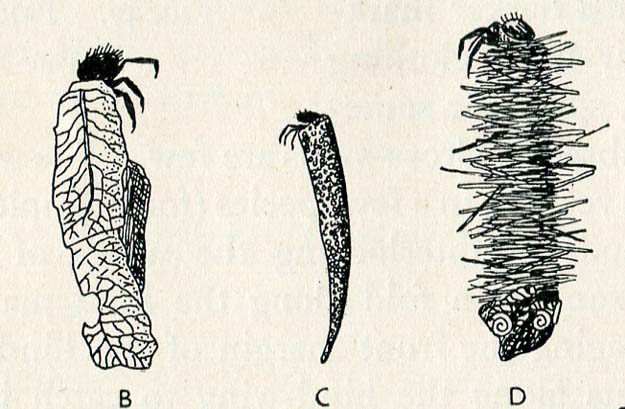B.D. Moreton, Guide to British Insects, An Aid to Identification, Londres, MacMillan & Co, 1950,
p. 97-99.
The larvae build themselves special cases in which to live. These are usually tubular and made of silk, and glued to their outsides are fragments of leaves, stalks, sticks, straws, grains of sand and gravel, shells, seeds, etc., which strengthen the case and help to conceal it. When it crawls about the larva protrudes its head and legs through the wide from opening of the tube; the hind end is usually smaller and often covered by a silken plate. This is perforated to allow a current of water, kept in motion by the larva, to pass through for breathing purpose. The form and composition of cases is often characteristic of different species of caddis-fly. Some larvae are exceptional in living without cases or in making cases that are not portable but fixed to stones and other objects; several larvae may live in the same shelter.
